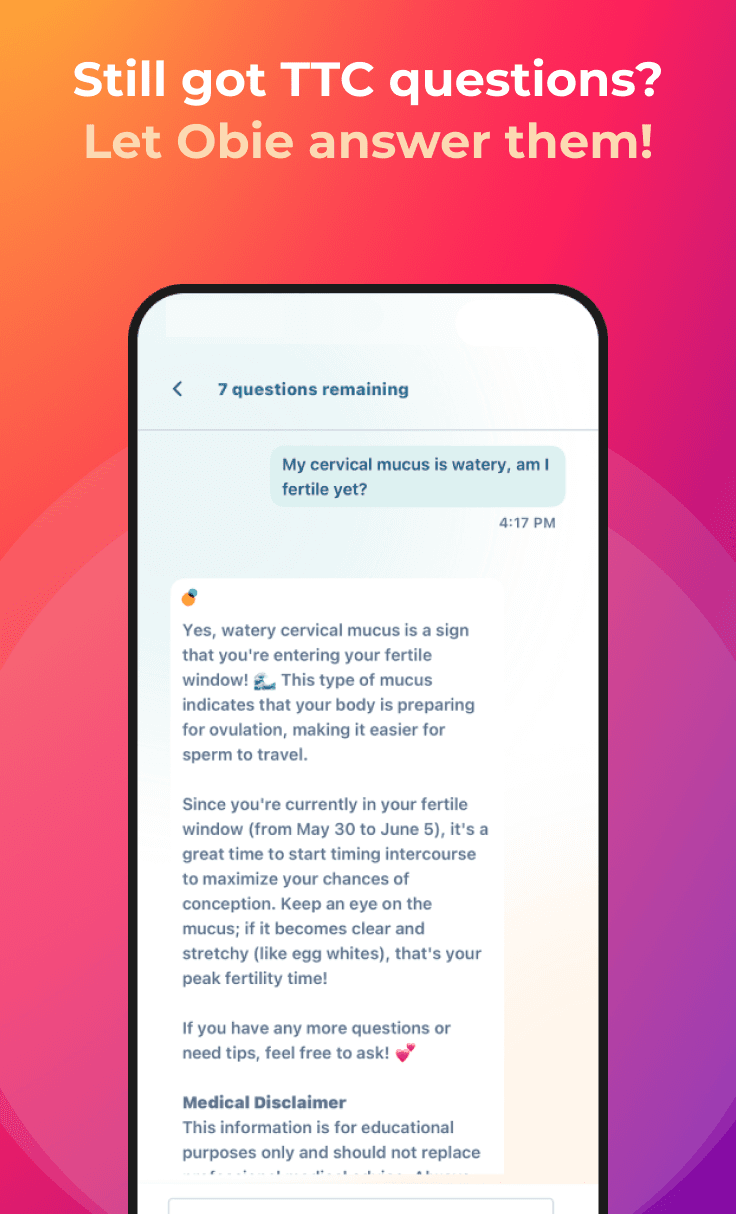Ovulation - It's All About the BIG O
Ovulation
Obie Editorial Team
At the beginning of a menstrual cycle, several ovarian follicles begin to mature anddevelop in the ovaries under the influence of pituitary hormones. Usually only one follicle develops fully, the so called 'dominant follicle' and this dominant follicle produces an egg which will be released at the time of ovulation and which can be fertilized. Ovulation is defined as the ejection of a mature egg from the follicle and the ovary. Ovulation takes place randomly from one or the other ovary.
The growing follicle secretes increasing amounts of the hormone estrogen and with peak estrogen production, there is a surge of luteinizing hormone (LH) which triggers the release of the mature egg from its follicle.

After Ovulation
Once ovulation has happened and the egg has been ejected from the ovary, it is picked up by one of the fallopian tubes and begins to travel towards the uterus in the fallopian tube. This is where fertilization, if it is to happen, takes place. The follicle that released the egg becomes known as the corpus luteum after ovulation and begins to secrete the heat inducing hormone, progesterone.
The lifespan of the egg after ovulation is less than 24 hours, likely up to 12 hours. Fertilization must take place within this timeframe within 12-24 hours after ovulation and sperms have to already be in place at the time of ovulation in order to fertilze the egg. Within 12-24 hours after ovulation the egg begins to degenerate and is no longer capable of being fertilized. Sperm must be deposited prior to ovulation and can survive in the female reproductive tract for a few days, so the few days before ovulation are considered fertile days during which making love improves your chances getting pregnant.
Ovulation and the Cycle Phases
Ovulation is the event that defines the phases of the menstrual cycle. The phase before ovulation, when the ovarian follicles are developing, is called the follicular phase. The phase after ovulation is called the luteal phase. The length of the follicular phase may vary but the luteal phase length after ovulation is generally constant from cycle to cycle for the same woman, lasting on average around 14 days (range of 12-16 days). When cycles are irregular, it is usually because ovulation occurred earlier or later than usual or ovulation does not take place.
Why should I know about ovulation?
Knowing exactly when and if ovulation occurred is important for several reasons:
- It allows you to see if intercourse was well-timed for conception
- It lets you determine your luteal phase length. Knowing your luteal phase length after ovulation tells you when to expect your period or a positive pregnancy test result.
When does Ovulation take place?
Your menstrual period (if you are not pregnant) begins two weeks after ovulation. it can vary from 12-16 days before the onset of menstruation depending on the length of your luteal phase. During an "average" 28 day cycle, ovulation is usually expected to take place between cycle days 13-15. Based on this guideline, many women are taught to expect ovulation around day 14 of their menstrual cycle. Many women, however, do not have average cycles and even those who usually do may see irregularities from time to time.
"Typical" Menstrual Cycle
According to the American Society for Reproductive Medicine a typical menstrual cycle may be anywhere from 21 to 35 days. Some women even notice cycles that are shorter or longer than this. Ovulation, then, may occur much earlier or later than typical guidelines suggest. For example, ovulation may occur on cycle day 23 during a cycle that is 35 days long for a woman with a 12 day luteal phase while ovulation may occur on cycle day 10 for a woman with a 24 day cycle and a 14 day luteal phase length. This variation among women and from cycle to cycle means that there is really no simple "one-size-fits-all" mathematical formula to calculate your ovulation date. However, it is possible to learn how to identify your own ovulation date and fertile signs by examining your fertility signals.
Detecting Ovulation
Your ovulation date and your time of peak fertility can be detected by charting your fertility signs. This is because our bodies produce signals that can alert us that ovulation is approaching and tell us when ovulation has passed. Fertility signs that indicate that estrogen levels are high and ovulation is approaching (and fertility is high) include observing increasingly stretchy and "egg white" cervical fluid and observing a high, soft and open cervix. Commercial devices such as ovulation prediction kits (OPKs) and fertility monitors can also tell us that ovulation is approaching by measuring the presence of estrogen or luteinizing hormone (LH) in urine. Charting your basal body temperature (BBT) allows you to pinpoint the day of ovulation and tells you when ovulation has passed because progesterone raises the basal body temperature after ovulation.








